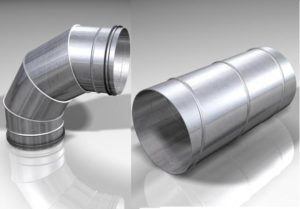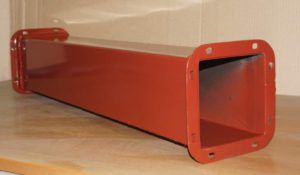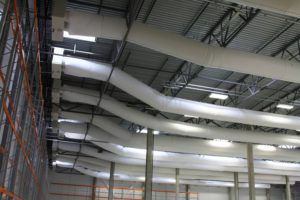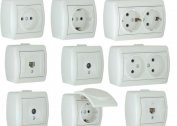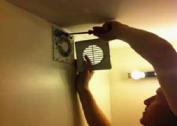Air conditioning and ventilation system, in general, consists of various parts. Some can be dispensed with or can be replaced, while others cannot. The latter include ducts. Easy installation of air conditioning, telecommunications, engineering structures in industrial enterprises, socio-cultural facilities or office buildings. For the installation of these systems use pipelines made of galvanized, black and stainless steel. The question arises, how do they differ and what are their purposes?
Classification
First you need to understand what kind of typology exists, and only then, based on the requirements, make a choice in favor of a particular pipeline.
By sectional shape:
- rectangular;
- round;
- oval.
By section size:
- round - diameter, which is possible 100-2000 millimeters;
- profile - 2000 x 2000 millimeters (this is the maximum size, profile pipes of an average size range are often used).
By production method:
- galvanized steel ducts;
- welded (air ducts from black steel);
- flexible;
- textile.
For the production of flexible species, steel wire is used, which resembles a spiral-shaped frame. This frame is glued with non-combustible fabrics or tape made of polyester material, which is metallized with aluminum or other metals. Flexible have their own subtypes:
- noise insulated;
- heat insulated.
These subtypes are produced exclusively of circular cross section, the diameter of which is possible in the range of 76-700 millimeters. The most popular are subtypes, with an inner diameter of 100-350 millimeters. They use flexible designs with a circular cross section of a similar size range in public and industrial buildings and residential complexes. Flexible air ducts are produced for channel split systems, hoods, tributaries or central air conditioning.
The advantages of using these types:
- quick installation;
- low specific gravity;
- low consumption of materials.
Installation
Before installation, pipes are stored under a film to prevent contamination or dust. This is important, since non-compliance with a fairly simple storage method can contribute to the ingress of all dust and dirt from the pipe into the room. When choosing a section, you must have a project in order to know the exact dimensions. Experts do not advise, having a pre-prepared project, to change the cross-section of the pipe. Installation of galvanized structures is not possible without the use of supports and suspensions. The distance between the used pendants (supports) should not exceed three meters.
To prevent gaps between the connecting flanges of the air ducts, which have a large rectangular section, additional brackets are used. Flexible designs are mounted in the most extended form. This is necessary in order to minimize pressure loss. Flexible air ducts are installed with slots of 60 millimeters between the supports, and the distance between the holders should not exceed 1.5 meters. An important condition for installing any type of ventilation system is grounding. This is due to the fact that the air passing through the ventilation creates static electricity, which at times increases the possibility of electric shock during installation or further operation.
Galvanized Steel Ducts
These designs have established themselves as durable ventilation ducts, which are widely used in office buildings, office buildings, thorn centers, residential buildings. They are quite resistant to corrosion (electrochemical type). They produce such air ducts for ventilation at factories manually or at special purpose mills. The sectional shape may be as follows:
- rectangular;
- oval;
- round.
Special flanges, which are assembled from the corners, connect rectangular pipelines to each other. Nipples are used to connect the second and third types. This type is the most common and popular among users of both residential and industrial buildings.
Galvanized steel ducts have several advantages:
- simple and quick installation;
- fairly low aerodynamic drag;
- various sectional shape.
Stainless steel ducts
Such pipelines have high moisture resistance and resistance to chemical aggressive environments. Therefore, stainless steel ducts are used in ventilation and supply systems of industrial facilities and catering. In addition to high technical characteristics, do not forget about aesthetic features. Often, stainless steel ducts are used in industrial facilities (factories, plants).
Black Steel Ducts
Such pipelines are used in ventilation systems for special purposes or structures associated with the removal of smoke.
Textile ducts
Such pipelines are made from special fabric, the main purpose of which is to use in the supply ventilation system. Shopping and entertainment complexes take a similar scheme as a basis. This is due to the need for a large amount of air. The immediate advantage is the cost and there is no need to install ventilation grilles.
Cooker hood ventilation system
Air ducts in the design of the kitchen hood are used to remove combustion products and polluted air into the ventilation system of the apartment. A correctly selected duct will not only last long and reliably, but also significantly reduce the risk of polluted air and unpleasant odors returning to the room.
Types of air ducts for cooker hoods
The following types of air ducts are used in the kitchen:
- plastic and metal. The most durable option is galvanized iron ducts, which belong to the first type. But plastic can also be quite rigid, which increases the service life of the structure;
- rectangular and round. Often the shape of the section does not play a special role. However, an air duct of circular cross section is a better option, since the absence of angles prevents the accumulation of combustion products and the formation of mold;
- rigid and flexible. The most expensive and reliable are considered to be rigid, which run from the hood itself to the ventilation system. Flexible are much cheaper, but there is a significant savings on the life of the structure and its reliability. Corrugated duct refers to a flexible look, but is very popular among users. Often manufacturers use aluminum to produce flexible.
Pipelines are used for transporting air under pressure in various fields:
- dust extraction and shavings at woodworking enterprises;
- laboratories;
- dryer maintenance;
- ventilation in chemical plants;
- hot gas outlet;
- air supply.
